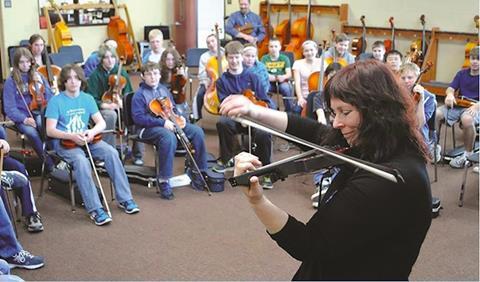Too often string teachers shy away from embracing styles outside the Western classical canon, but in doing so they’re ignoring a wealth of useful skills and techniques, writes Julie Lyonn Lieberman

The following is an extract from an article in The Strad’s November 2020 issue in which Julie Lyonn Lieberman outlines the advantages of embracing styles outside the Western classical canon. To read in full, click here to subscribe and login. The November 2020 digital magazine and print edition are on sale now.
The Western canon tends to focus on two skills as pertains to ear training: the ability to identify the pitches in a melodic phrase as well as its rhythmic content. However, learning a new style helps to build up additional listening skills that can be translated into right- and left-hand techniques:
- To create new ideas over a chord progression, a multi-style player must master time increments. This entails hearing in 4-beat, 4-bar, 8-bar, 12-bar and 32-bar sections without having to count. This skill supports the ability to improvise in any musical style, including roots, blues, swing, pop/rock and jazz.
- Rhythmic subtext: multi-style players must learn to ‘audiate’ (in other words, mentally hear) each style’s unique rhythmic groove. The ability to hear the rhythmic subtext makes it far easier to capture the style, whether it’s the shuffle bow stroke for Appalachian music, swing bowings for swing and jazz, or the Irish lilt, to name a few examples.
Read The Spice of Life: Teaching different styles
- Ornamentation: it’s essential to be able to recognise and duplicate variations in each style’s approach to vibrato, grace notes and slides, as well as rhythmic techniques like the ‘chop’. Other important listening skills involve hearing and replicating an array of accents, identifying whether they fall on a down-beat or an up-beat, where they occur within the bar, and whether they are applied at the inception, a third of the way through, halfway through, three quarters of the way through or at the tail end of the note or phrase. It is also important to be able to hear the differing ways of physically producing a surge in volume.
- Vertical technique: not all styles sound out every note equally within the phrase. Some are ghosted while others pop out. Learning to listen out for this will enable the player to detect nuances in pressure, and thus exercise control over the vertical motion of the left hand in regard to finger pressure. These left-hand nuances will automatically stimulate variations in bow pressure.
- Style-appropriate bow patterns: the Western canon often invites symmetrical bow strokes, while many other styles employ asymmetrical bowings. The ability to hear the difference is the first step towards a dialogue with one’s bow arm in a style-specific manner.











































No comments yet